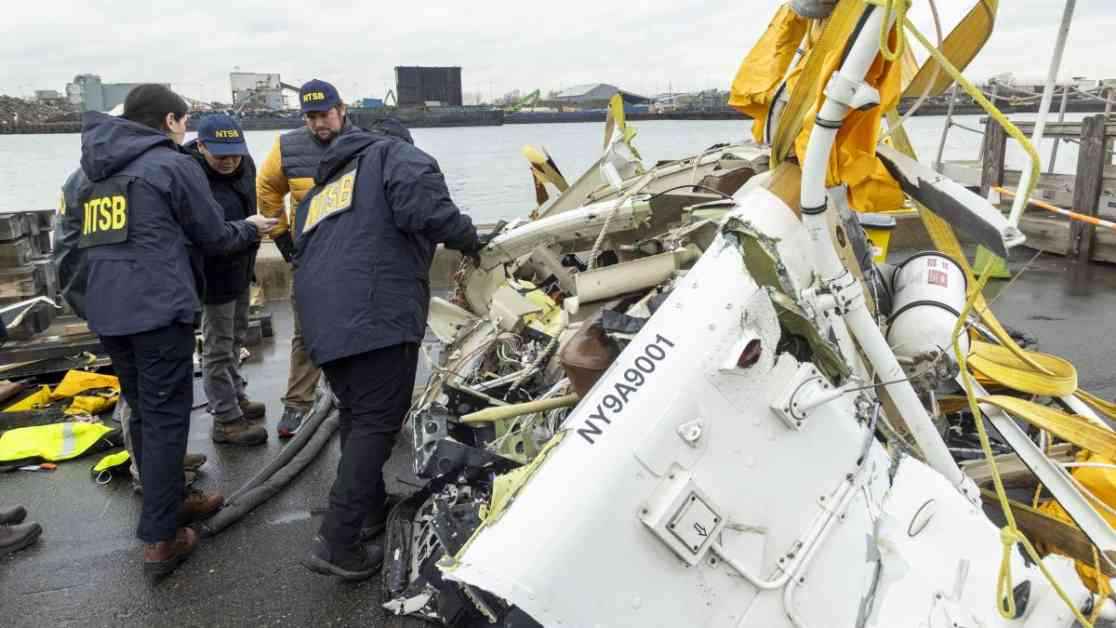The recent tragic helicopter crash into the Hudson River has left many questions unanswered. Federal investigators from the National Transportation Safety Board (NTSB) have revealed crucial details about the incident. The sightseeing helicopter, operated by New York Helicopter Charter Inc., was carrying a pilot and a family of five visiting from Spain. The crash was devastating, claiming the lives of all onboard, including the pilot, Seankese Johnson, and the Escobar family.
NTSB Findings on Missing Recordings and Recovered Parts
The NTSB disclosed that the helicopter was not equipped with any recording devices, making the investigation challenging. In a written statement, they stated that no onboard video or camera recorders were recovered, and none of the avionics recorded information crucial to the probe. This lack of data poses a significant hurdle in determining the cause of the crash.
Divers from the New York Police Department tirelessly searched for critical helicopter components, such as the main rotor, main gear box, tail rotor, and a substantial portion of the tail boom. While the main fuselage, cockpit, cabin, and part of the tail boom were recovered from the river, key elements are still missing. The Bell 206 L-4 helicopter had undergone a major inspection on March 1, raising questions about the maintenance and airworthiness of the aircraft.
Eye Witness Accounts and Emotional Impact
Witnesses to the tragic event recounted a harrowing scene as the helicopter flew along the Manhattan skyline before abruptly descending into the Hudson River. Spectators saw parts of the aircraft break away, the tail rotor and main rotor dislodging, and smoke billowing from the chopper before it plunged into the water. The poignant loss of lives, including children as young as four, has deeply affected the community and aviation industry.
Michael Roth, the owner of New York Helicopter, expressed profound shock over the crash. He mentioned watching a video of the helicopter falling and noticing the absence of main rotor blades, a bizarre occurrence he had never witnessed in his three decades in the business. Roth’s candid reflection on the incident underscores the unpredictability and inherent risks of operating aircraft, no matter the experience or precautions taken.
The tragic fate of the Escobar family and the pilot, Seankese Johnson, has drawn attention to the safety of private helicopter flights in New York City. Sen. Chuck Schumer has called for the Federal Aviation Administration (FAA) to suspend New York Helicopter’s license pending a thorough investigation. He emphasized the need to prioritize safety over profits, citing a concerning trend of companies disregarding regulations and endangering lives.
In the aftermath of this devastating crash, the NTSB’s ongoing investigation seeks to unravel the circumstances that led to the helicopter’s tragic end. The absence of critical recordings and missing components poses a significant challenge to understanding the sequence of events. The impact of this incident on the victims’ families, the aviation community, and the public at large serves as a stark reminder of the fragility of life and the importance of stringent safety measures in air travel.














